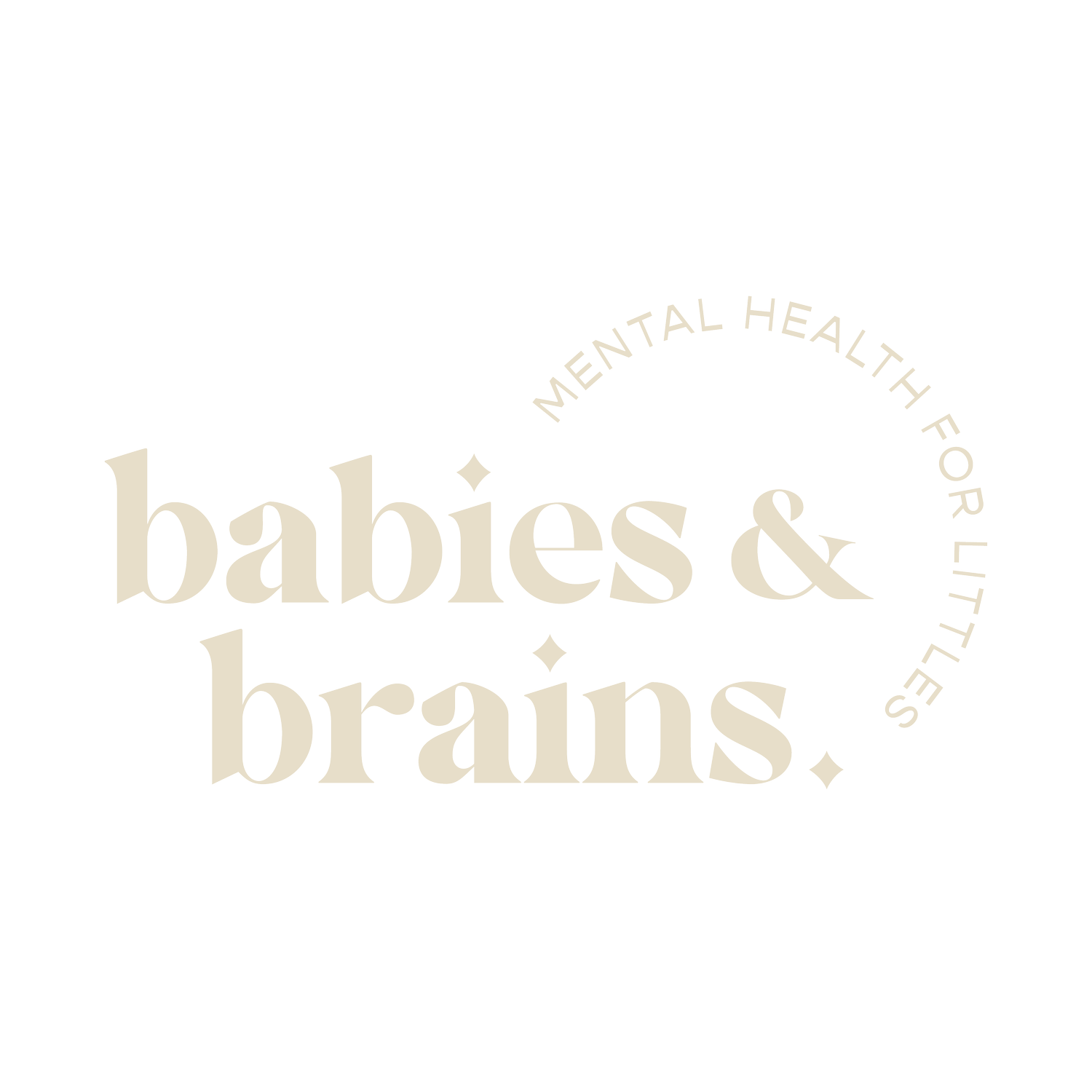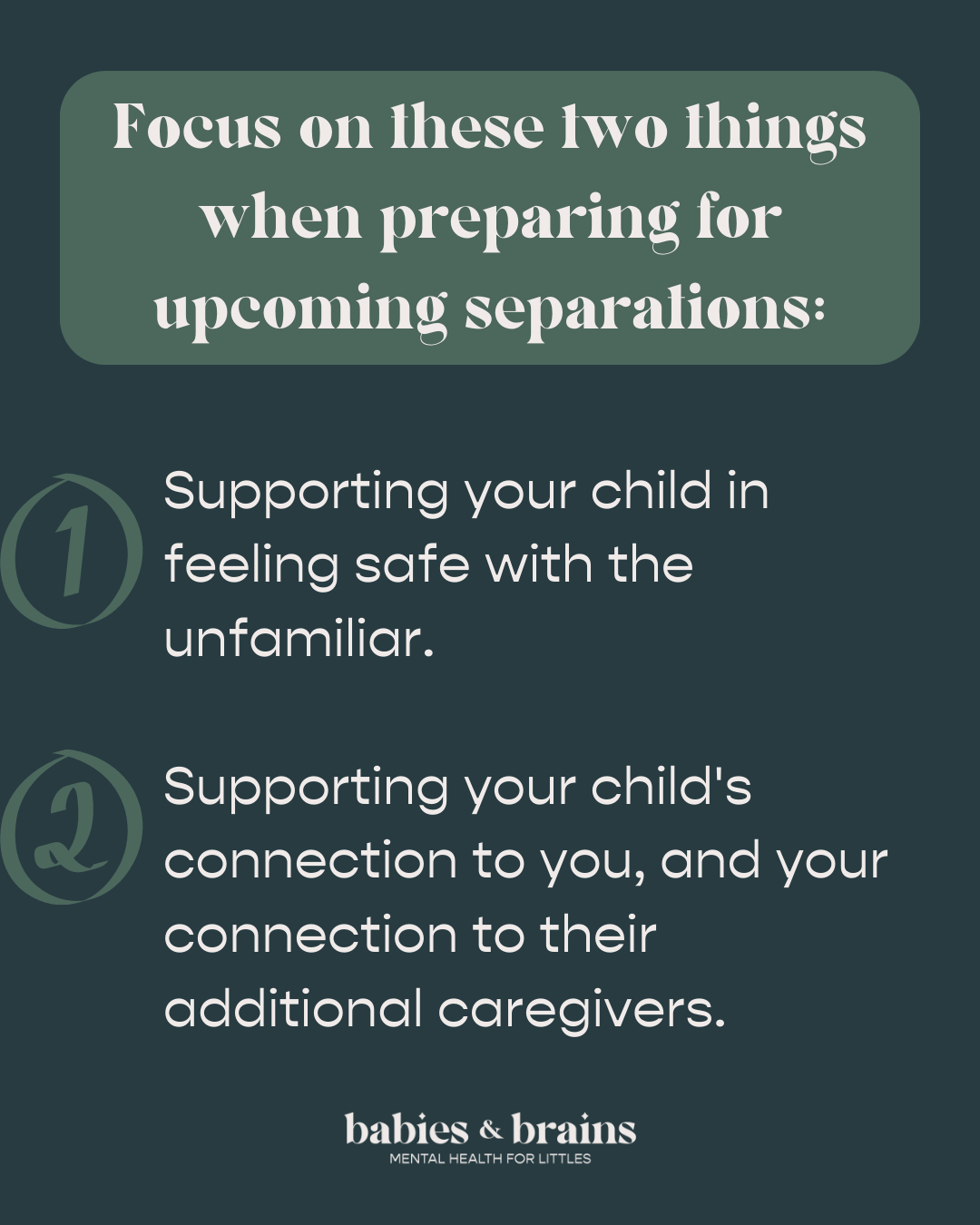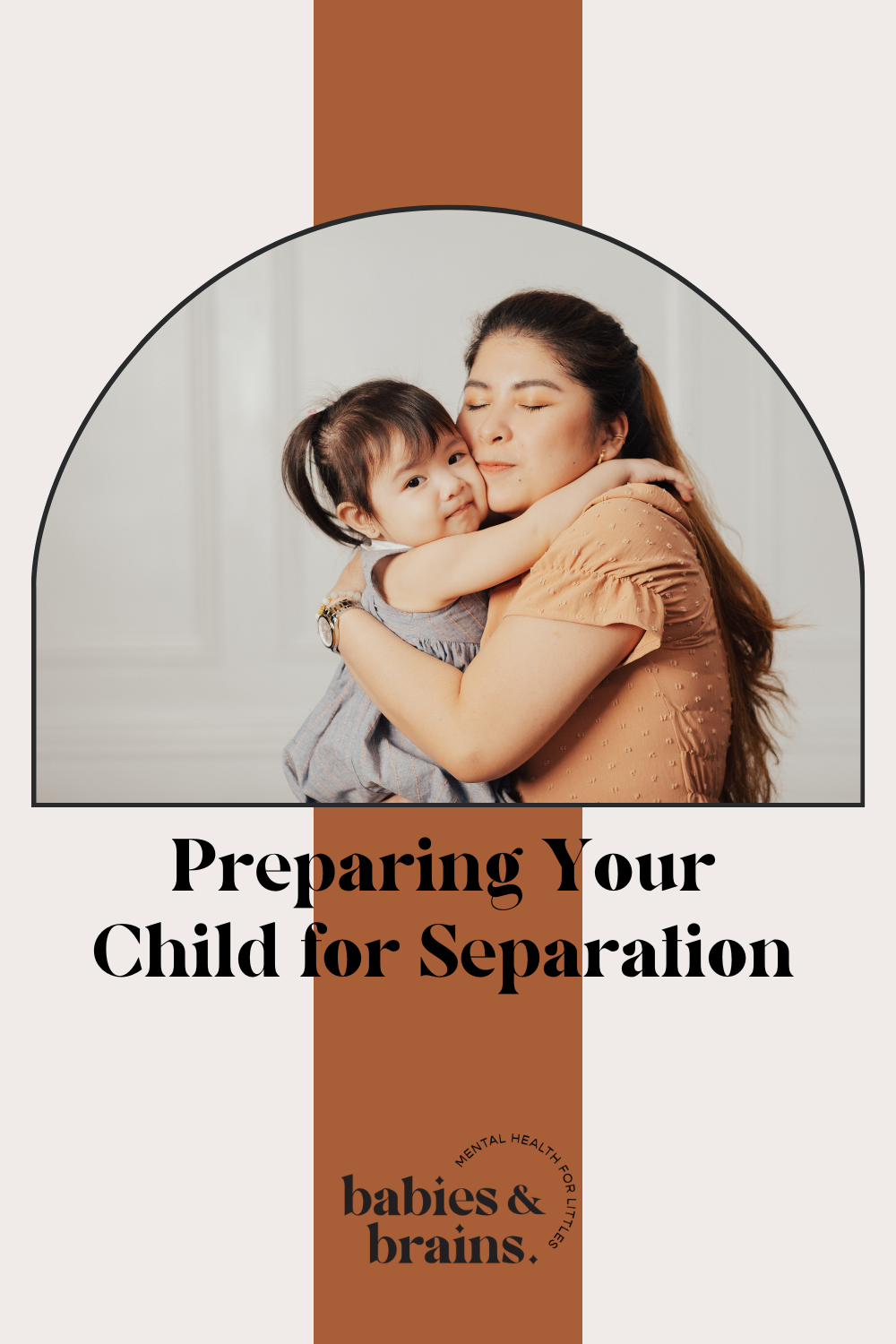How to Prepare Your Child for School Transitions
It’s that time of year again that is full of new transitions and separations (school starting, new childcare, after-school programs, etc). Quite often, there is so much to prepare for when it comes to supplies, paperwork, clothing, etc, that we forget to prepare our children for the actual transition and separation itself. Our children may have their new backpack and lunch box all set, but are they ready for being away for the first time, in the care of another adult, with a new routine? If you just read this paragraph and immediately thought… “Oh no…I forgot that part!” Don’t worry, I’ve got you. Let’s discuss some tips you can use to help familiarize your little one with their upcoming transitions.
These are the two themes we will focus on when preparing your little ones for separation:
Supporting your child in feeling safe with the unfamiliar (caregivers, places, routines, etc).
Supporting your child’s connection to you, and your connection to their additional caregivers.
Supporting your child in feeling safe
Here’s the thing: Just because we know a situation, place, or person is safe, doesn’t mean our child will feel safe. Think about when you are starting a new job, or meeting your friend for dinner at a brand new restaurant with a crazy parking situation; sometimes we get that spike of anxiety that puts us on high alert. Of course our new job may be perfectly safe, and the restaurant as well, but that doesn’t mean that we don’t feel more hypervigilant, stressed, anxious, or nervous.
Our bodies are meant to be on alert when changes occur because we can’t always predict what will come with those changes. Even “good changes” can throw us off; we may be really excited to move to an amazing new home, or redo our child’s entire room to match their favorite color, but even the changes we are excited for can come with some stress and uneasiness.
So, no matter how excited your child appears to be for their new school, new nanny, new teacher, etc, it’s important to focus on supporting them to feel safe.
Talk about the new caregivers, the place your child is going (school, grandma’s house, childcare center, etc), and what the routine will look like ahead of time.
I recommend starting these discussions 2-4 weeks before the transition. Make sure to speak in a warm, positive tone when talking about these elements of the transition. Say things like, “Ms. Amanda is going to take care of you at school. I told Ms. Amanda that your favorite book is Rainbow Fish. She has it in your classroom!”
Practice the routine and incorporate rituals and role play.
Practice how you will say goodbye to your child, whether you establish a special handshake, a warm hug, blowing a kiss, etc. You can actually go through the motions by role playing, or you can even bring these theme into your child’s play with figurines, stuffed animals, etc.
Meet the new caregivers prior to the transition.
This one is really important, and it leads us into the second part of this process. It is important for your child to meet their new caregivers (teacher, nanny, babysitter, childcare provider) ahead of time. This person will be caring for your child and this is who your child will look to to keep them safe. The more familiar your child feels with this person, the safer they will feel while away from you. Ideally, you will want your child to meet this person a few times (more than once if possible!).
Support your child’s connection to you, and your connection to their additional caregivers.
It’s really important that your child feels connected to you while they are away. It’s also essential that your child knows that you are connected to their additional caregivers. Why? Your child trusts you to keep them safe. If they know that you are connected to this additional caregiver and YOU trust this caregiver, your child will recognize this person as a safe person. It’s like a golden thread of connection is tied from you, to this person. Remember, connection is your most valuable tool when supporting your child during separations.
You can support your child’s connection to you while you are away by giving them a special bracelet that both of you wear and telling them that every time you look at the bracelet, you will think of them, and they can do the same and think of you! You can also do this with a stamp or a heart drawn on their hand with marker. You can do other things like providing them with a photo of you to keep in their backpack, or writing them notes for their lunch box!
You can show your child that you are connected to their additional caregivers by talking positively about this person while at home, having a photo of this person in your home in a common area and referencing this when talking about them, and, most importantly:
spend time with this person with your child present and focus on your warm, positive energy to give your child a cue that this person is safe.
Your emotional energy during the entire preparation process is immensely important because your child looks to you to understand what is safe and what is dangerous. Your warm, confident energy will send a cue to your child that this transition process is safe.
If you are preparing your child for childcare, I have an entire guide PACKED with structured tips that will guide you through the entire process, including how to choose the right fit for your family, scripts on how to talk to your child about the transition, play ideas including book recommendations, and more! Access it here.
Save these tips to reference later if you found this helpful!





